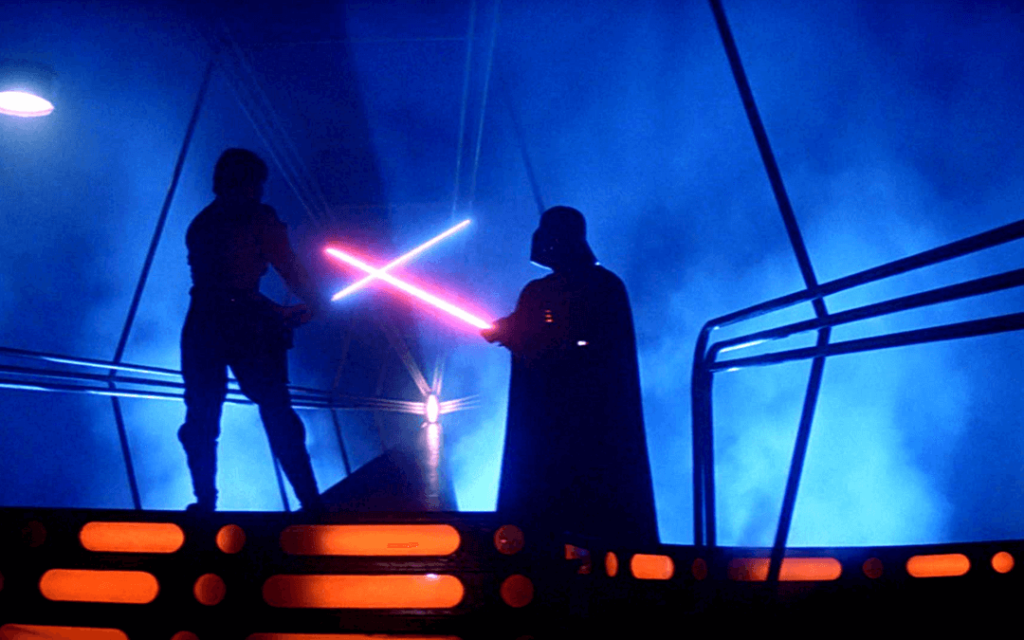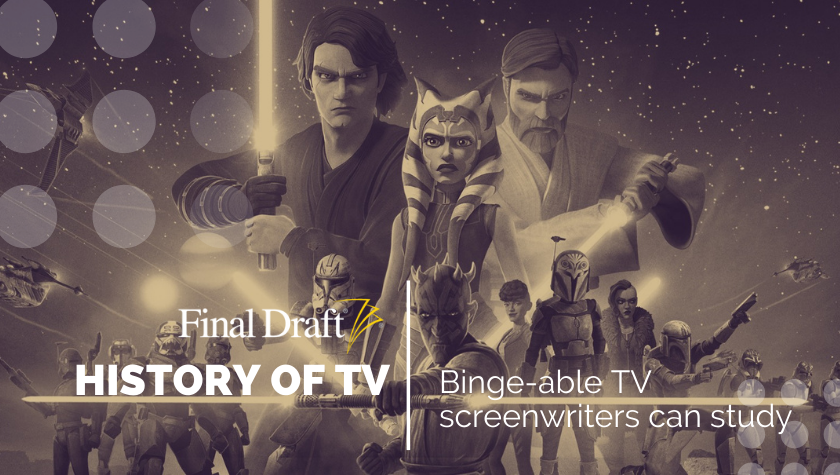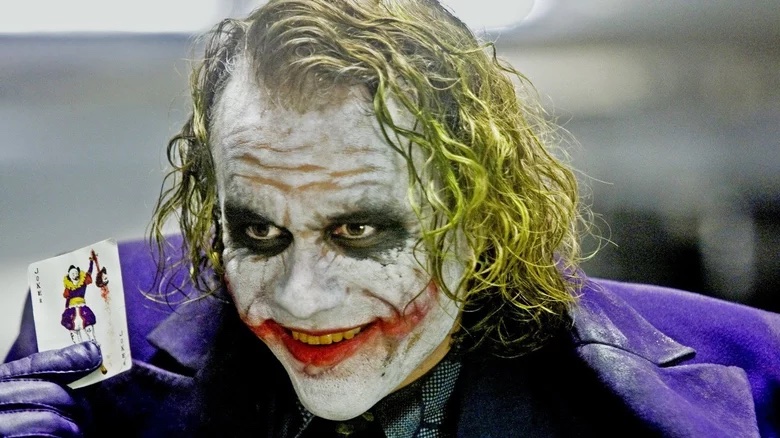Writing Three-Dimensional Villains
January 11, 2017
Actor Ben Mendelsohn has been getting his share of acclaim for his portrayal of Rogue One’s main villain: Imperial Officer Orson Krennic. No doubt, it’s a wonderful performance, but credit should also be given to the writers for creating a three-dimensional villain with his own agenda and worldview.
Krennic isn’t the mustache-twirling villain of yesteryear or the more over-the-top madman who frequently appears in James Bond or superhero films. He’s an all-too-human bureaucrat. He’s more concerned about office politics (getting recognition for the Death Star) than he is about taking over the universe. Krennic calls to mind Hannah Arendt’s notion of “the banality of evil.” When writing about the trial of Nazi officer Adolf Eichmann, Arendt was struck by how mundane Eichmann was in his impressions and thought process. He was more preoccupied by his career in the SS than any sort of ideology. The parallels between George Lucas’ vision of the Empire and the Third Reich are obvious enough. (Lucas himself referred to the Imperial officers as “Nazis” in his Empire Strikes Back commentary.)
Hence, it’s not much of a stretch to suggest that the creators of Rogue One took Eichmann as an inspiration when developing Krennic. Regardless, the character shows that sometimes, evil deeds, like creating a giant space station that destroys planets, can derive from rather ordinary desires. And even when a galactic civil war is raging, an ambitious bureaucrat doesn’t want his superior to take all the credit. This doesn’t give Krennic much moral depth, but it does give him humanity. In Krennic’s mind, he’s doing a good job and should be given his due. A great villain never thinks he’s the villain.
Krennic’s first scene in Rogue One is very similar to SS Colonel Hans Landa’s first scene in Inglourious Basterds. Both men put the pressure on another man under a thin veneer of civility while the stormtroopers accompanying them send the real message. Both men use humor and charm as a disarming tactic. The characters, however, do differ. Krennic is a bureaucrat through and through. There’s not a sense that he’s bothered by mass murder, but neither is there a sense that he relishes it. Again, it’s just a job. He’s more amoral than immoral.
Landa, on the other hand, does have a sadistic side. Not only does he derive glee in watching those he interrogates squirm, he takes it upon himself to choke German actress Bridget von Hammersmark when it’s discovered she’s helping the Allies. Landa blames his bloodlust on her being a traitor, but he later reveals little loyalty to the Third Reich when he himself assists the Allies in killing Hitler and his highest-ranking officers. So Landa is really psychopathic and enjoys hands-on murder when given the opportunity. But can such a monster be human?
What ultimately gives Landa his third dimension is when he does flip sides and helps the Basterds. By no means is this for ethical reasons. He doesn’t have a moral epiphany. It’s revealed that, despite waxing poetic about the Nazi ideology earlier in the film, Landa is simply a survivalist. His loyalty is to himself. He’d kill for the Allies just as easily as he’d kill for the Nazis. Surrounding the demagogues and their true believers are self-motivated opportunists who keep their true intentions to themselves. This is a real characteristic, and it’s the primary reason Landa feels real.
He has his own worldview even if it’s a twisted and immoral one.
Another complex villain with his own worldview is The Joker.
Generally, the most acclaimed portrayal of the iconic Batman villain is Heath Ledger’s. Though a skilled and impassioned performance, if one reads Christopher and Jonathan Nolan’s script for The Dark Knight, one will find the character is right there on the page. Taking a cue from Alan Moore’s graphic novel The Killing Joke, the Nolans’ Joker has a tragic yet unreliable backstory (one that The Joker keeps changing) as he spreads chaos and anarchy throughout Gotham City. If The Joker has a goal, it’s to destroy all goals. The scene that gives the most illumination to The Joker’s philosophy is the hospital scene between him and Harvey Dent.
The Joker explains that he doesn’t have any specific plan; he just wants to show all “the schemers” the futility of their law and order. Existence is chaos in The Joker’s mind, therefore the purest and most heroic way to live is to embrace chaos. He’s an “agent of chaos” (i.e., an anarchist). Pretty much every modern-day depiction of The Joker is anarchistic in nature, which is a large part of the character’s appeal. Many people feel helpless in life and constrained by all the rules and shackles of society. When they watch a character that wants to dismantle all of this, they can’t help but feel some liberating euphoria. It’s a dark wish fulfillment.
This is why The Joker, like most complex villains, has ascended to being an antihero. For a few dark hours in a movie theater, we can watch The Joker burn everything down without any real-world consequences. This is also why, despite some of the horrible things he does, The Joker is likable to audiences. They laugh at his jokes. They marvel at his audacity. A Batman movie without a Joker is never as much fun. The Joker reflects a dark, anarchistic impulse in many of us. This is one of the many reasons he has depth as a character. You believe The Joker exists if only for the duration of the movie. He has a philosophy and it’s rooted in existential strife. There’s sense in his senselessness.
The only villain more popular than The Joker is arguably Darth Vader.
And this takes us back to Star Wars and the iconic villain at the center of its universe.
Initially, in the original Star Wars, Darth Vader isn’t a three-dimensional villain. Despite having an inventive look, he more or less fulfills the role of the stereotypical heavy. It’s only the notion that he was once a Jedi that gives him some depth. Lucas wisely embellished this backstory and decided to make Darth Vader Anakin Skywalker in The Empire Strikes Back. In doing so, he not only made Vader three-dimensional, he made him a far more compelling character.
In Star Wars, Vader is essentially a glorified henchman. He’s only interested in doing the bidding of the Emperor and retrieving the stolen Death Star plans. In Empire, however, he has a far more personal goal and hidden agenda. He’s searching for his son, Luke Skywalker, and it’s revealed halfway through the film he’s been doing this under the Emperor’s radar. At the film’s famous climax, Vader tells Luke that he’s his father and he wants them to join forces, destroy the Emperor, and “rule the galaxy as father and son!” Luke, of course, passes on the offer and Vader is left in a tight spot: He made his big power play and it didn’t work out. In the next film, Return of the Jedi, Vader’s in a more defeated and vulnerable role. He’s no longer a villain as much as a fallen hero in need of redemption.
In 2005’s Revenge of the Sith, audiences finally got to see how and why Anakin Skywalker became Darth Vader. In addition to a lust for power, Anakin is plagued by visions of his wife, Padmé, dying during childbirth. Anakin’s plight is sympathetic, especially when he reaches out to Yoda, and the Jedi Master offers little more than Jedi proverbs about needing to detach from all that he loves. When Chancellor Palpatine, the soon-to-be Emperor, shows Anakin more interest and empathy than the Jedi, it’s understandable how Anakin could be manipulated.
Palpatine also mixes some truth into his manipulations; he cites that the Jedi have a “dogmatic narrow view” of The Force. Lucas intelligently doesn’t place all the blame of Anakin’s downfall on the Dark Side. As shown throughout the prequels, the Jedi are a bloated, arrogant hierarchy. They’re well-meaning, but they exist in a bubble and lack humanity. As Anakin descends to the Dark Side, he clings to his justifications: It’s to save Padmé; he’s bringing peace to the galaxy; the Jedi were trying to take control of the Republic; etc. Lucas understood the road to Hell isn’t paved with good intentions, but with justifications.
Again, no villain thinks he’s the villain.
In the opening scene of Rogue One, Krennic repeats Anakin and Palpatine’s mantra about “bringing peace to the galaxy.” You almost think he believes it, too.
Krennic, Hans Landa, The Joker and Darth Vader are all examples of three-dimensional villains.
When you’re writing a villain, ask yourself the following questions: What is the character’s worldview or philosophy? How do they justify the horrible things they do?
Written by: Edwin Cannistraci
Edwin Cannistraci is a professional screenwriter. His comedy specs PIERRE PIERRE and O’GUNN both sold with more than one A-list actor and director attached. In addition, he’s successfully pitched feature scripts, TV pilots and has landed various assignment jobs for Universal, Warner Bros, Paramount and Disney.



